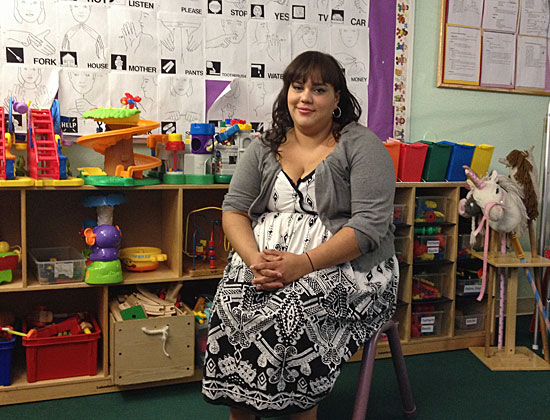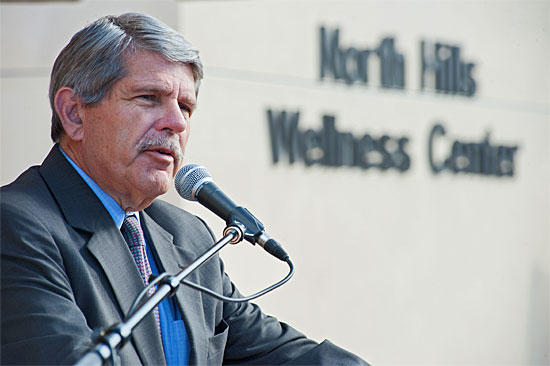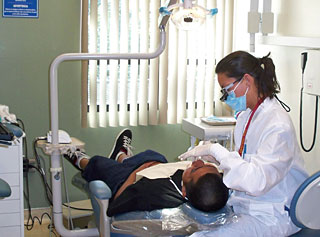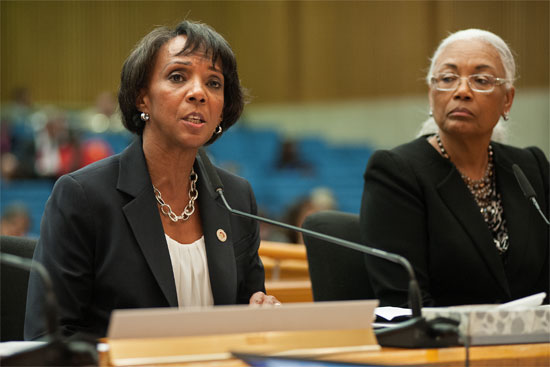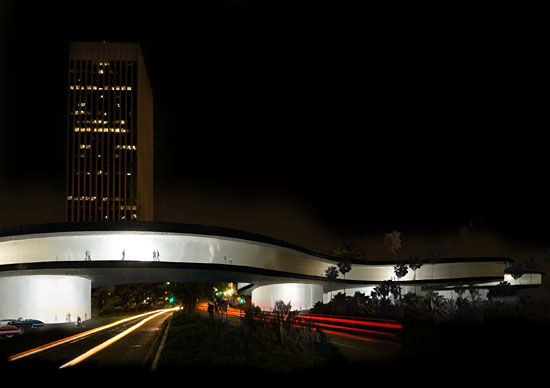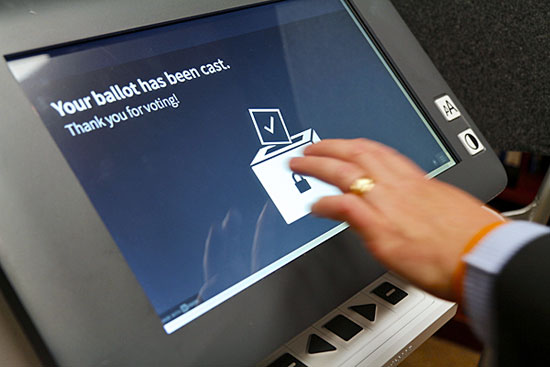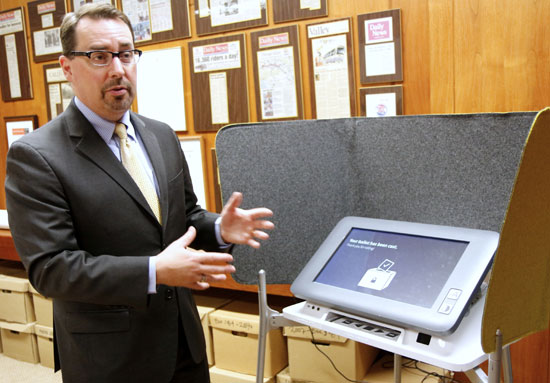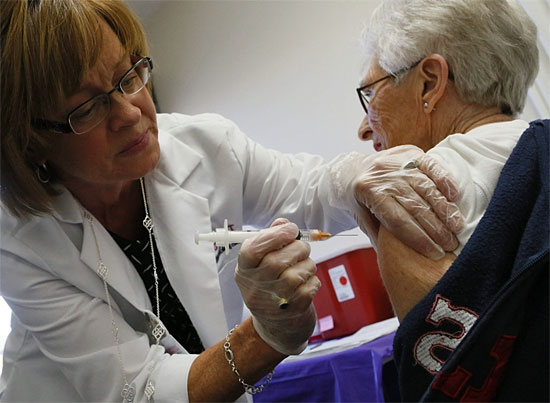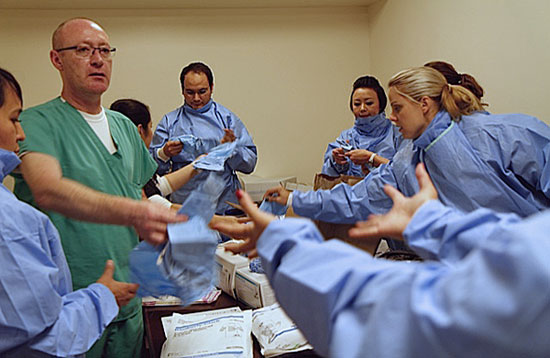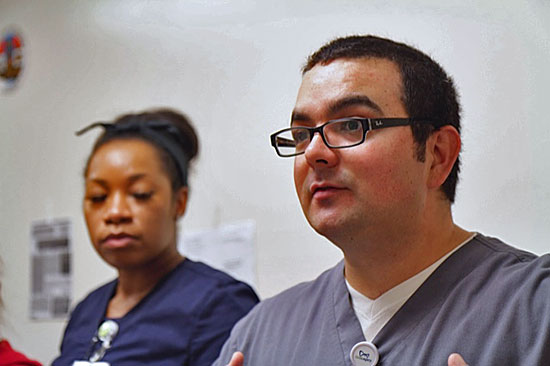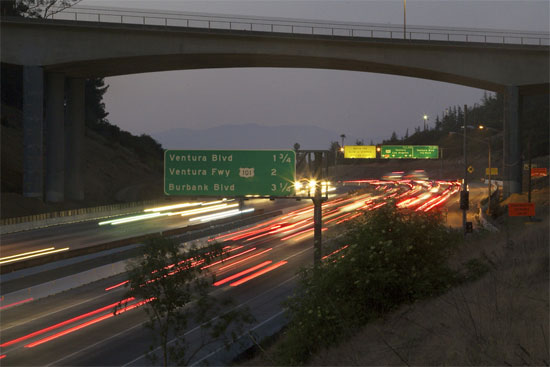Making tracks for a better future
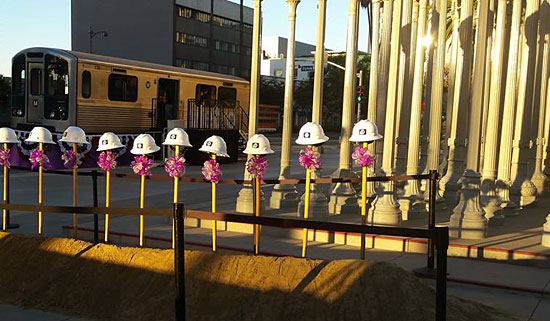
Ceremonial shovels and hard hats await their big moment, beside LACMA’s “Urban Light.”
Los Angeles’ subway is turning out to be the engine that could. A little more than 20 years after the first riders hopped aboard the first leg of the subterranean system, the network is getting ready to make tracks into the Westside, taking center stage in an unprecedented effort that will double Metro’s rail miles over the next two decades.
The Purple Line subway, which now runs from downtown only as far as Wilshire Boulevard and Western Avenue, will extend to La Cienega Boulevard by 2013, with stops at La Brea Avenue and the Los Angeles County Museum of Art, where officials recently held a ground-breaking ceremony to celebrate the coming of the line.
Funded in large part by Measure R—the half-cent sales tax approved by county voters in 2008—Los Angeles’ “rail-volution” heralds the region’s transition from smog-choked autopia to transit-friendly metropolis.
“It’s an amazing attitudinal shift,” said Art Leahy, Metro’s CEO. “Well into the 1980s people would say, as regards rail, ‘We don’t need that—this is not New York and it’s not Chicago.’ Well, you don’t hear that anymore.”
The Purple Line Extension is one of five major rail projects that are currently under construction, along with Phase 2 of the Expo Line, the Gold Line Foothill Extension, the Crenshaw/LAX Line and the Regional Connector. When fully built, the projects will add 37 miles of track and 30 stations, reaching destinations including Santa Monica, Little Tokyo, Beverly Hills, Azusa and Watts.
At the Los Angeles County Museum of Art groundbreaking ceremony, officials extolled the project’s benefits for transit riders and the community at large.
“It’s going to help people get where they need to go, cut traffic and boost our economy,” said Los Angeles Mayor Eric Garcetti. “Tens of thousands of jobs will be created because voters said, ‘We want to get this done.’ ”
Supervisor Zev Yaroslavsky called the occasion an “historic day for the Westside,” noting that the area has not seen mass transit for decades—since the demise of the fabled Red Car network. He also said that the traffic-plagued Wilshire corridor—home to popular destinations such as LACMA, the La Brea Tar Pits and UCLA—was the best place to get the most possible riders for the new line.
“It’s the densest corridor outside of downtown,” Yaroslavsky said. “I believe we’ll have over 100,000 people riding this line within a year of its opening.”
The Purple Line extension project is broken into three sections with a projected total price tag of $6.3 billion, from a mix of federal and local funds, including half from Measure R. When completed, riders will be able to get from downtown L.A. to Westwood in just 25 minutes. The first 3.9-mile segment of the subway, with stations at Wilshire/La Brea, Wilshire/Fairfax and Wilshire/La Cienega, is expected to be completed in 2023. The full extension will have additional stops at Rodeo Drive, Century City, UCLA and the Veterans Administration Hospital and is projected to wrap up in 2035.
The Westside doesn’t have to wait for the subway, however, to get its next rail infusion. Phase 2 of the Expo Line is on track for completion by the end of 2015. The line will bring trains to within blocks of the Pacific Ocean, ending at 4th Street and Colorado Avenue in Santa Monica and opening up transit options for millions of L.A. County visitors and residents. The beneficiaries will include Eastsiders like Metro’s Leahy, who lives in Pasadena. “I don’t go to the Westside often, even though I like the Westside, because it’s so hard to get around,” Leahy said. “It just takes forever to drive anywhere.”
The current rail expansion is the biggest of its kind anywhere in the United States, and transit advocates hope it will whet the public’s appetite for more. Plans for a new ballot measure that could fund additional projects are already in the works. While it’s too soon to predict what those plans will include, L.A.’s transportation makeover is already well underway.
L.A. County’s modern-day rail journey began in 1990 with the opening of the Blue Line, street level light rail that extends from downtown L.A. to Long Beach. Over the next decade, the Red and Purple subway lines opened in phases, connecting downtown to Koreatown, Hollywood and the San Fernando Valley. Meanwhile, the Green Line linked Norwalk and Redondo Beach in 1995. Additional lines have opened since then, including the Gold Line to Pasadena and, most recently, the first section of the Expo Line to Culver City in 2012.
Posted 11/25/14

